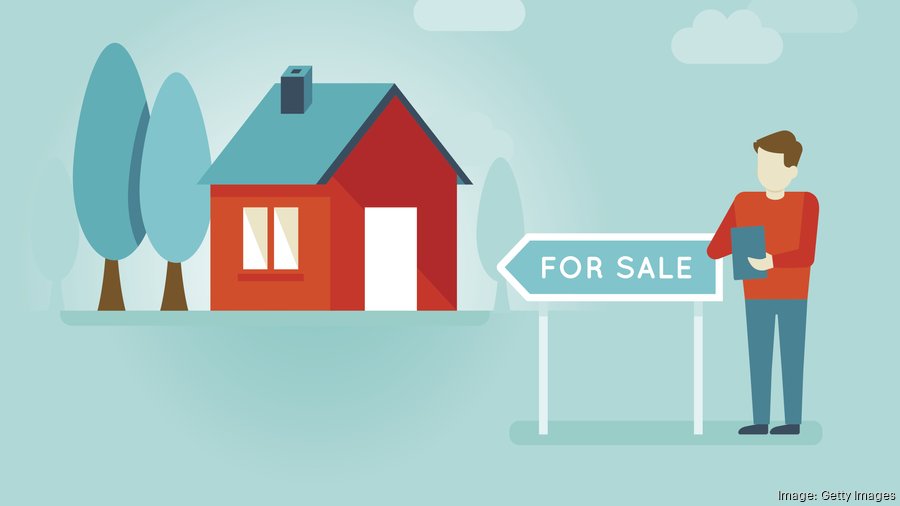
Story Highlights
- The National Association of Realtors says 83% of metro areas saw their single-family home prices grow in Q1.
- Nationally, the median single-family home price grew 3.4% in the first quarter.
- The Northeast performed the best in sales and price gains while the South lagged.
Austin Business Journal writes, "The U.S. housing market may be showing signs of softening but in most cities, single-family homes only got more expensive at the start of 2025.
A new report by the National Association of Realtors found 83% of metro areas tracked by the NAR saw their existing single-family home prices increase in the first quarter of 2025. While down from the 89% of metro areas that saw price growth in the fourth quarter of 2024, it still suggests that, in many areas, buying a home is still becoming a more expensive endeavor.
The national median single-family existing-home price grew to $402,300 in Q1 2025, a 3.4% increase compared to the first quarter of 2024. In the fourth quarter of 2024, the year-over-year national median price increased 4.8% compared to Q4 2023.
"Most metro markets continue to set new record highs for home prices," said NAR Chief Economist Lawrence Yun in a news release with the report. "In the first quarter, the Northeast performed best in both sales and price gains by percentage. Despite the stronger job additions, the South lagged with declining sales and virtually no price appreciation."
The regional disparities were stark in the NAR report, which found six of the top 10 large markets for the highest price growth were in New York and Ohio. Those include:
- Syracuse, New York: 17.9%
- Montgomery, Alabama: 16.1%
- Youngstown-Warren-Boardman, Ohio-Pennsylvania: 13.6%
- Nassau County-Suffolk County, New York: 12%
- Toledo, Ohio: 11.1%
- Cleveland-Elyria, Ohio: 11.1%
- Rochester, New York: 11.1%
- Gulfport-Biloxi-Pascagoula, Mississippi: 10.5%
- Trenton, New Jersey: 10.4%
- Allentown-Bethlehem-Easton, Pennsylvania-New Jersey: 10.2%
The metro areas that saw the biggest price drops among existing single-family homes in Q1 2025 compared to the first quarter of 2024 were dominated by places that saw big jumps in housing prices during the Covid-19 pandemic, when people moved to take advantage of remote work or new opportunities. Three of the markets with the biggest price drops were in Florida and two were in Texas.
Overall, 17% of metro areas posted home-price declines in the first quarter, up from 11% in the fourth quarter of 2024. Those include:
- Sebastian-Vero Beach, Florida: -8.2%
- Punta Gorda, Florida: -6.8%
- Duluth, Minnesota-Wisconsin: -6.4%
- Boulder, Colorado: -6%
- Logan, Utah-Idaho: -5.8%
- St. George, Utah: -5.5%
- Sherman-Denison, Texas: -5.4%
- Abilene, Texas: -4.6%
- Cape Coral-Fort Myers, Florida: -3.6%
- Durham-Chapel Hill, North Carolina: -3.4%
"Very expensive home prices partly reflect multiple years of home underproduction in those metro markets," Yun said. "Another factor is the low homeownership rates in these areas, implying more unequal wealth distribution. Affordable markets tend to have more adequate supply and higher homeownership rates."
Many remain shut out of housing market because of affordability
The monthly mortgage payment on the median existing single-family home with a 20% down payment was $2,120, down just $2 from the fourth quarter of 2024 but up 4.1% – or $84 – from one year ago. Households typically spent 24.4% of their income on mortgage payments, down from 24.8% in the prior quarter and 24.5% one year ago, according to NAR data.
But price increases continue to put homeownership out of reach of many families, according to NAR data, which found that households earning $75,000 could only afford 21.2% of home listings, as of March 2025 — down from 49% of listings during the pandemic.
Households that earn $100,000 annually can afford 37.1% of home listings, down from the 64.7% they could afford in 2019, according to the NAR.
That's because the cost of a typical home in America has soared. In the second quarter of 2020, the median sale price for homes sold in the United States was $317,100, according to data compiled by the Federal Reserve. By the second quarter of 2022, that number was $437,700, up 38%. It dropped to $416,900 in the first quarter of 2025, but that's still up 31% from the early days of the pandemic five years ago.
The cost of a so-called "starter home" has jumped in recent years as well, according to an analysis by Redfin Corp. In 2012, the typical median sale price for what Redfin defined as a "starter home" was $95,000. That price rose in 2019 to $165,500 — and it rose further, to $250,000, last year.
Those prices and higher interest rates have left Generation Z worried about missing out on the dream of homeownership — or deeply regretting having taken the plunge.
Baby boomers have once again regained the top spot among homebuyers, representing the nation's largest generational group, according to the NAR's 2025 Home Buyers and Sellers Generational Trends report. The report found baby boomers make up 42% of all homebuyers, with millennials holding just a 29% stake — down from 38% a year earlier."
Source: Austin Business Journal
Written by: Andy Medici
Published: March 16, 2025

Leave A Comment